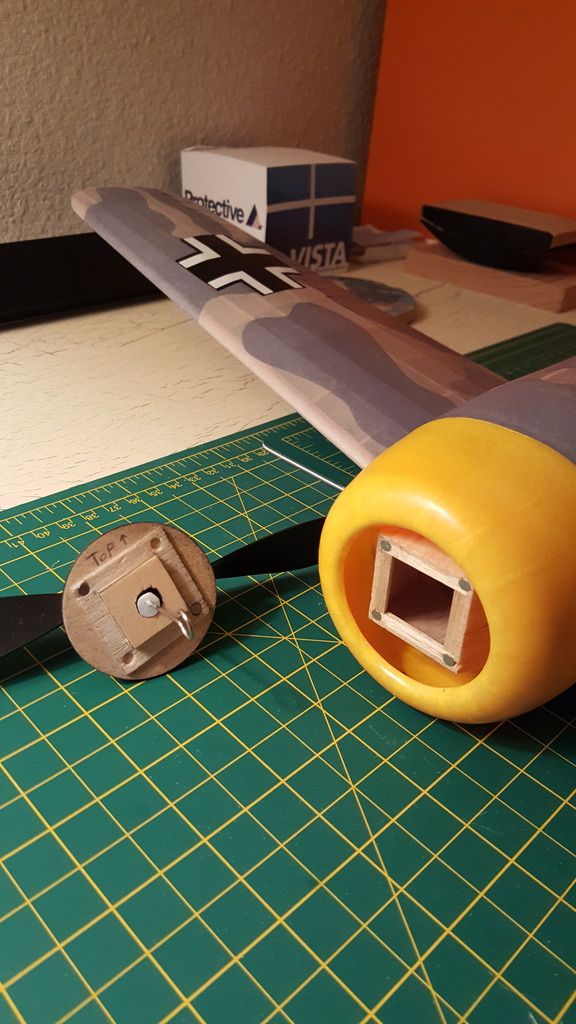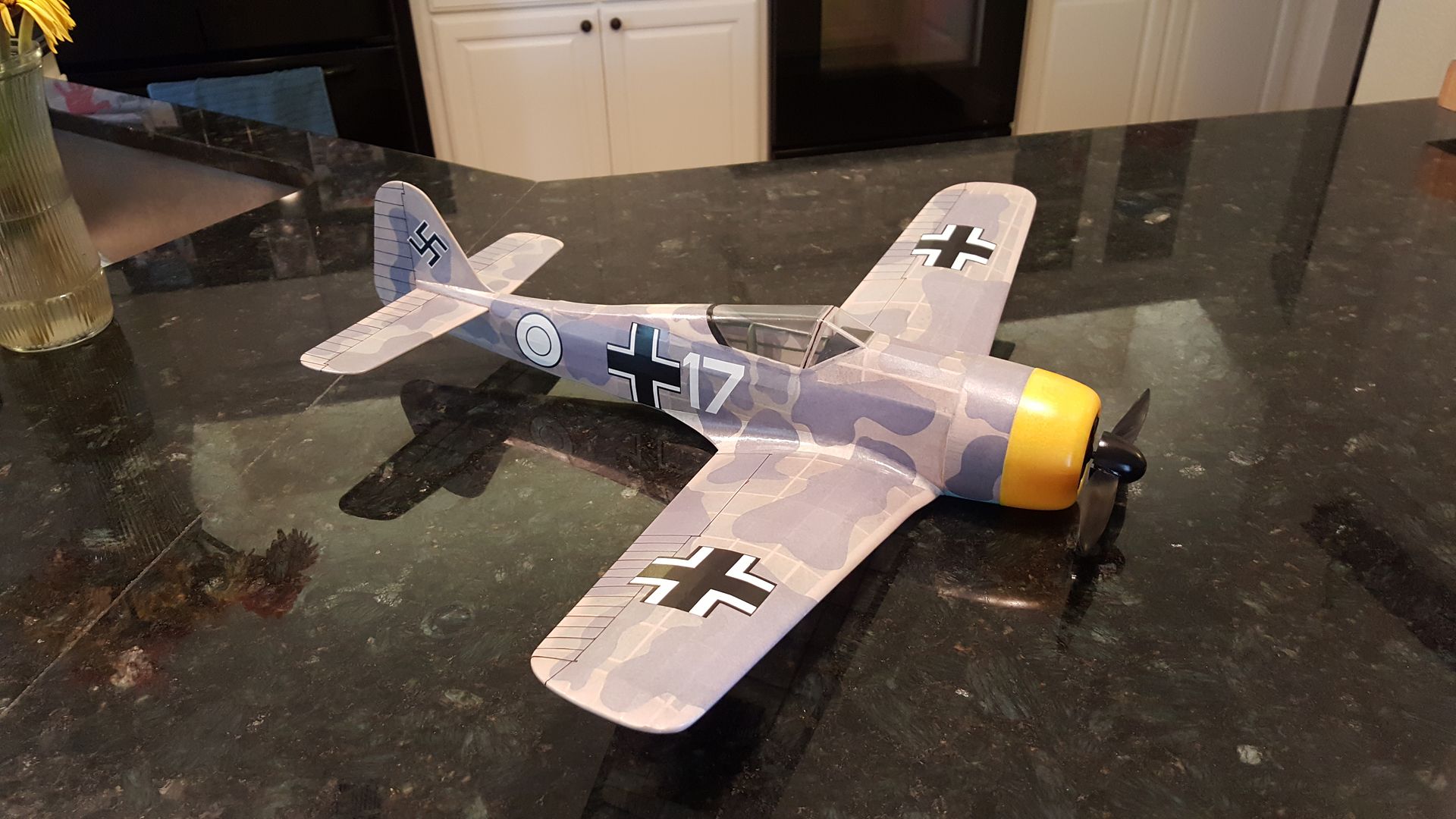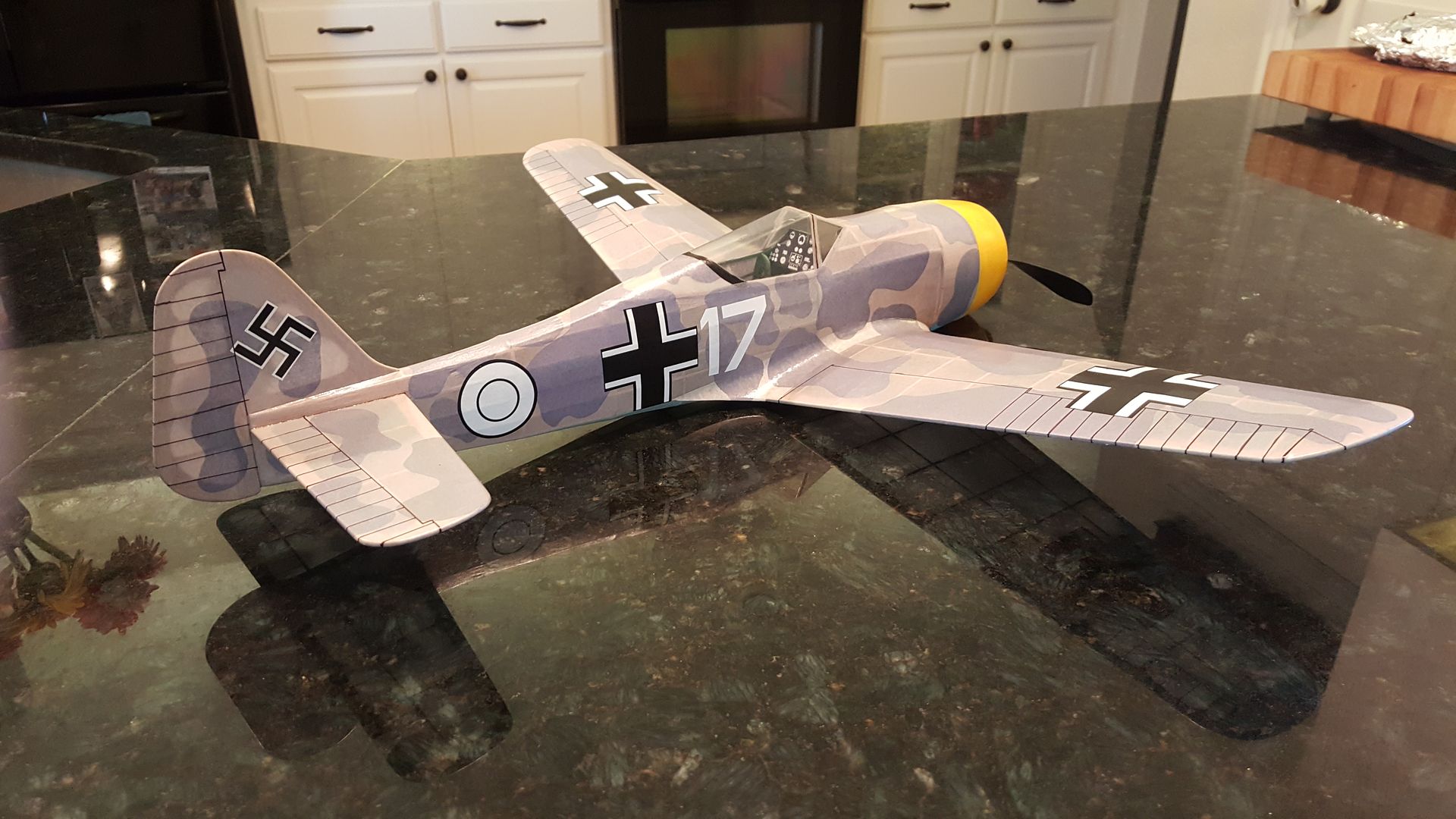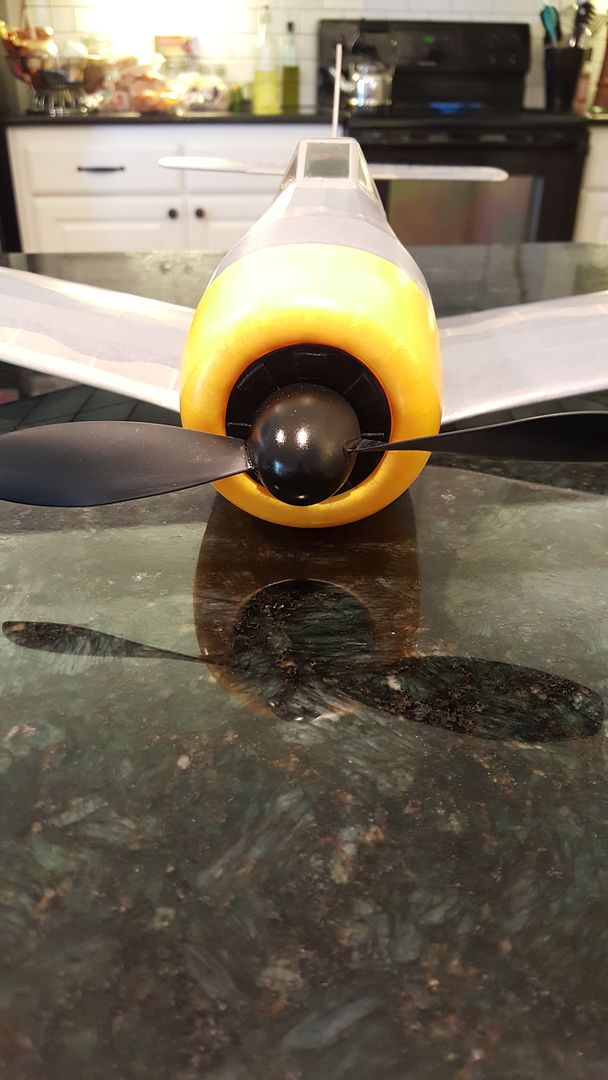Mitch wrote:Hi
First off, your model LOOK GREAT!
Now for some comments.
On the FW the front is not cylinders. They were covered with a cooling fan, so those are blades of the cooling fan and the cylinders are behind that. I though the same thing at first and was disappointed with the lack of detail of the 'cylinders' until I did research and see how the BMW engine worked.
Looks like you added extra diehedral and that is good. For FAC rules maximum allowed is to the bottom of the canopy. I try to get it just below that to make sure my model is 'legal'
Also nice job on lines, FAC rules also require all mg's and any cowling bumps and things like that. Nice job on wing faring. I still have a hard time with those.
Looks like you do not have the peg in for the photos. I think I see the spot and looks like you followed the plan. That is fine. Now I bring mine forward one bay.
Do you plan to fly with supplied prop? that will work and have less torque effect. I use 9 inch props now. I would like to see a picture of how the nose block is secured. What rubber are you using? I have successfully flown models in a school yard or park with Guillow's rubber. Breaking point on tan is about 6 or 7 inch ounces, Guillow's rubber will break at about 18 inch ounces so you will get a short powerful burst!
again GREAT model, keep up the EXCELLENT work... only take my points as comments, your model looks like it should be in the photo of the month!
Mitch
PS what is the AUW of the model? AUW = All Up Weight (Ready to fly with rubber motor) Also important to know weight of model without rubber motor.
I did some more reading on the BMW radials, along with the Double Wasp and other WWII radial poweplants; really interesting stuff. Sure enough, you're absolutely correct about the fan, and I also found it interesting that BMW provided the cowling for all the engines too. I have a second kit that I'm going to make some corrections on, maybe even try making fan blades with soda can aluminum or something.
I did add extra dihedral, I think it was one inch extra on top of the plan diehedral. I had to make a new support spar out of thin hobby plywood because the kit plastic one wouldn't fit the new angle. I hadn't considered FAC rules, but you got me thinking that I should read up on them and incorporate them into my flying builds.
I was planning on using the supplied prop, and just got some tan rubber to try out. Good catch on the motor peg, the brace is in the plan position, I just hadn't cut out the paper for it yet.

Here is the nose block. I left space for more magnets, and will try stacking them to trim the thrust.
I'm looking forward to flying this model, but I don't have a lot of experience with that part of the hobby yet. I enjoy the building part more than anything, but for some reason I usually try to build them 'flyable' even if it's just going to hang somewhere (as opposed to building them for display only). Therefore, I have almost a dozen builds under my belt, but pretty much no flying experience, but I plan on changing that.
Thanks for the kind words, and I absolutely embrace the constructive comments; I still have a lot to learn so I'm definitely open to all suggestions. I like making the wing fairings, I think they really add to the model's look. I use a manila colored resume paper that blends in with the balsa colorwise, and is thick enough to curve nicely without being so stiff (like manila folder material) that it creases. When I get my digital scale back from a friend I'll post the weight.






